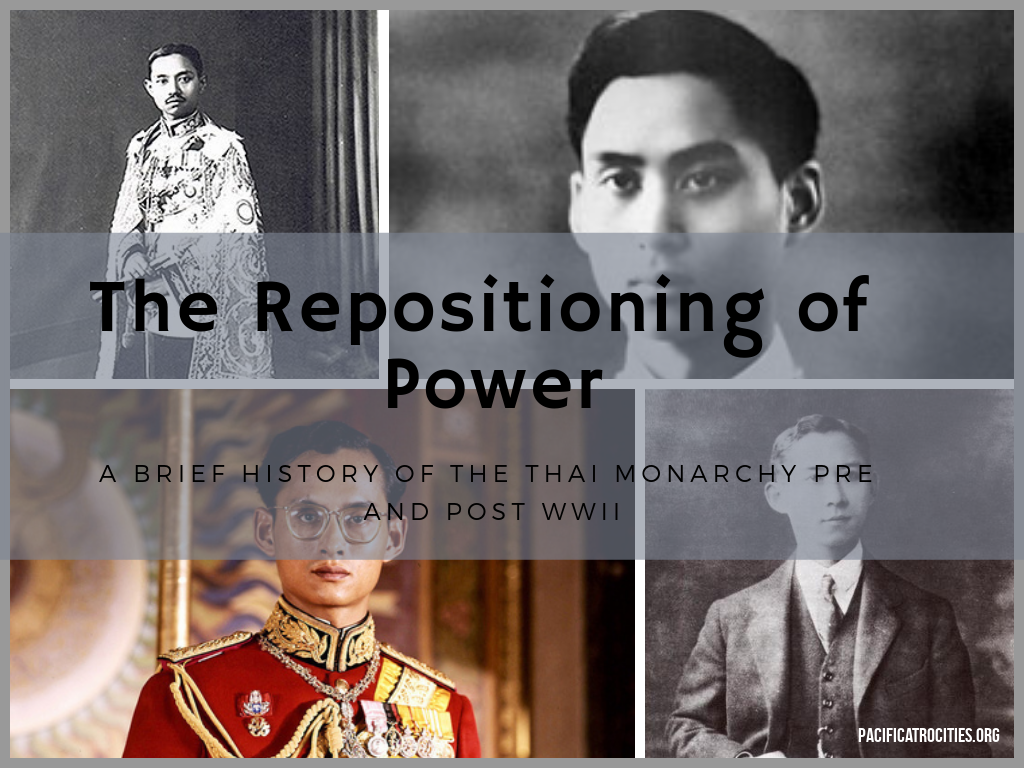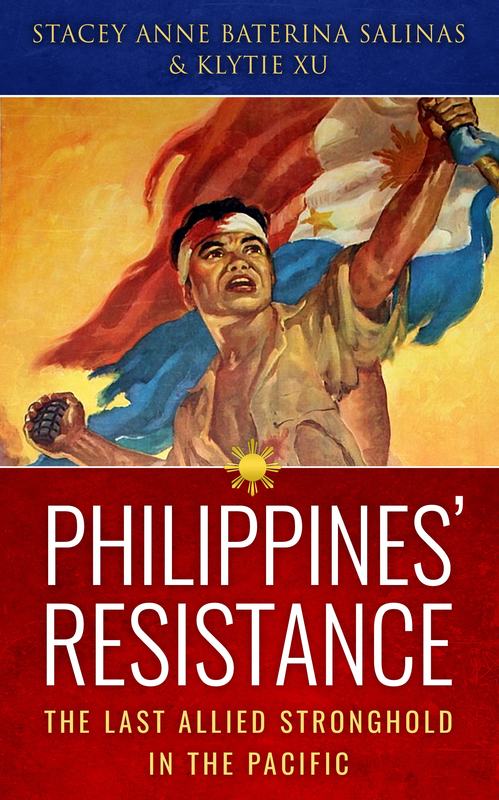|
by Nickii Wantakan Arcado "Learning that the superstitious Japanese feared sharks, the ingenious Yanks painted the snout's of their P-40s to represent grinning heads of 'tiger sharks.' The A.V.G. pilots called themselves 'Tiger Sharks' but it was not long before the admiring Chinese troops changed it to 'Flying Tigers' the tiger being regarded as a minor deity in some sections of China." - Source: WAR HEROES, No. 2| October-December 1942 On May 22, 1942, at his headquarters in Kunming China, General Claire L. Chennault called for a meeting with his American Volunteer Group known as the “Flying Tigers”. Chennault wanted to launch an attack against the Japanese Air Force in northern Thailand as at the time, due to its close proximity, the Japanese were using this strategic Thai base to attack Britain’s RAF (Royal Air Force) Base. Chennault proposed that the P-40s (the designated fighter planes of the flying tigers) would fly from Kunming to Loiwing, China, refuel, and continue to fly towards the airstrip at Nam Sang in Burma. From there, the planes would be within a close range of Chiang Mai, where they would stay overnight and strike early morning. General Chennault would not have predicted, however, that that would be the last time he saw one of his best pilots, William McGarry, for the next three years. William “Black Mac” McGarry joined the Flying Tigers before the beginning of the U.S.’s involvement in the war in 1941. He first learned to pilot planes for the U.S. Army Air Forces at Selfridge Field (now known as Selfridge ANGB Airport), Michigan. With 10 victories under his belt, McGarry set off for the Chiang Mai mission on May 23, hoping to provide top cover for his other four military men. Check out more about the history behind the formation and operations of the Flying Tiger in another one of our articles here. On March 24, 1942, while flying over Chiang Mai, Thailand to attack the Japanese Air Force, McGarry's plane was shot down by the anti-aircraft fire. Taking quick action after the attack, McGarry parachuted into a clearing over Chiang Mai jungle. After wandering the northern Thai jungles for three weeks, he was finally caught by the Thai police patrolling the area. McGarry was quickly turned over to the Japanese government, who imprisoned him under a compound in Thammasat University. What the Japanese didn’t know, however, that the compound was in the line of sight to the leader of the Free Thai Movement: Pridi Phanomyong. Pridi Phanomyong and the Thai resistance movement was already well established in communications with Allied forces. They reported on Japanese movements, important logistical bases, weaponry stock, and in this situation, the names of people imprisoned by the Japanese. As the resistance movement was operating largely underground, maintaining cover was of utmost importance to Pridi. Thailand, on the surface, was to present itself in alliance to the Japanese, while the resistance movement worked to channel crucial information to its Western Allies. When Pridi became aware of McGarry’s imprisonment, he informed the Free Thai members that the coalition would do whatever they can to rescue him and bring him home. Several years later, when Free Thai agents were fully established in Bangkok, Nicol Smith—the OSS officer who headed US-Thai operations—contacted Chennault to inform him of opportunities to have his soldiers infiltrate Thailand once again. Chennault asked Smith of the possibility of one of his pilots, McGarry, being alive. Within four days, Smith reported that McGarry was well and alive. McGarry was still kept inside the POW camp, but the guards were Thai police who were headed by General Adun Adundetcharat. Adundetchara, a resistance member himself, worked to keep POWs out of Japanese hands, all while coaching the captured soldiers how to respond while being interrogated by the Japanese. When asked if McGarry was well enough to attempt an escape, Thai resistance members quickly confirmed. Removing McGarry was a considerable risk, as the Japanese official regularly inspected the POW camps. After internally debating on multiple scenarios to fool Japanese officials, Adun and other resistance leaders came up with a risky scheme; report that McGarry died in captivity and smuggle his “lifeless” body out of the camp via a makeshift coffin. Adundetcharat assigned a Thai policeman to remove McGarry from his cell. Should the Japanese catch up with the policeman’s lies, Arun would disclaim that the order was forged and declare that he would take swift actions against the crime, further preserving his reputation with the Japanese while secretly working undercover for the Thai resistance movement. McGarry would then be taken to the Customs Department boat in the Gulf of Siam where he would board the OSS PBY Catalina to Ceylon (present day Sri Lanka). McGarry was imprisoned for nearly three years before escaping with help from Free Thai Movement members. After the war, McGarry completed law school and, still holding on to his appreciation and honor, practiced law with U.S. military service. On April 13, 1990, he passed away from cancer at the Veterans Hospital in Loma Linda, California. McGarry’s release and exfiltration from Thailand is a great example of the operations of the Free Thai movement during World War II; creating a political and societal front of Japanese-Thai allyship while obscuring Free Thai and OSS activities underground. This strategy of duality would evidently allow both Thais and the Allies to win the war in Southeast Asia. References:
Related ArticlesRead and Learn More!
0 Comments
Leave a Reply. |
- Home
- Stories
-
Internship
- Summer 2024 Internship
- Summer 2023 Internship
- Fall 2022 Internship
- Summer 2022 Internship
- Summer 2021 Internship
- Fall 2020- Spring 2021 Internship
- Summer 2020 Internship
- Fall 2019 Internship
- Summer 2019 Internship >
- School Year 2018-2019 Internship
- Summer 2018 Internship >
- Fall 2017 Internship
- Summer 2017 Internship >
- Books
- Archives
-
Resource Page
-
Supplementary Research Guides
>
- Unit 731 - Guide >
-
Philippines' Resistance - Guide
>
- Philippines World War II Timeline
- The Japanese Invasion & Conquest of the Philippines
- Bataan Death March
- Formation of Underground Philippines Resistance
- Supplies of the Guerrilla Fighters
- The Hukbalahap
- Hunter's ROTC
- Marking's Guerrillas
- United States Army Forces in the Philippines of Northern Luzon (USAFIP-NL)
- The Aetas
- Chinese and Filipino-Chinese Nationalist Guerrilla Units
- The Female Faces of the Philippine Guerrillas
- Rising Sun Flag - Guide >
- Pinay Guerrilleras - Guide >
- Fall of Singapore - Guide >
- Three Years and Eight Months - Guide >
- Siamese Sovereignty - Guide >
- The Khabarovsk War Crimes Trial - Guide >
- Unit 731 Cover-up : The Operation Paperclip of the East - Guide >
- Marutas of Unit 731 - Guide >
- Prince Konoe Memoir - Guide >
- Competing Empires in Burma - Guide >
- Battle of Shanghai - Guide >
- Ishi Shiro - Guide >
- Taiwan The Israel of the East - Guide >
- Seeking Justice for Biological Warfare Victims of Unit 731 - Guide >
- Rice and Revolution - Guide >
- Clash of Empires - Guide >
-
Hunger for Power and Self-SufficiencyI - Guide
>
- The Influence of War Rations on Post-War Culinary Transformations
- How World War II Complicated Food Scarcity and Invention
- American Military Innovations
- Government-Sponsored Food Inventions in Europe during World War II
- Feeding the Army: The Adaptation of Japanese Military Cuisine and Its Impact on the Philippines
- Mixed Dishes: Culinary Innovations Driven by Necessity and Food Scarcity
-
Denial A Quick Look of History of Comfort Women and Present Days’ Complication - Guide
>
- The Comfort Women System and the Fight for Recognition
- The Role of Activism and International Pressure
- The Controversy over Japanese History Textbooks
- The Sonyŏsang Statue and the Symbolism of Public Memorials
- Activism and Support from Japanese Citizens
- The Future of Comfort Women Memorials and Education
- Echoes of Empire: The Power of Japanese Propaganda - Guide >
- Lesson Plans >
-
Supplementary Research Guides
>
|
Pacific Atrocities Education
730 Commercial Street San Francisco, CA 94108 415-988-9889 |
Copyright © 2021 Pacific Atrocities Education.
We are a registered 501 (c)(3) charity. |
- Home
- Stories
-
Internship
- Summer 2024 Internship
- Summer 2023 Internship
- Fall 2022 Internship
- Summer 2022 Internship
- Summer 2021 Internship
- Fall 2020- Spring 2021 Internship
- Summer 2020 Internship
- Fall 2019 Internship
- Summer 2019 Internship >
- School Year 2018-2019 Internship
- Summer 2018 Internship >
- Fall 2017 Internship
- Summer 2017 Internship >
- Books
- Archives
-
Resource Page
-
Supplementary Research Guides
>
- Unit 731 - Guide >
-
Philippines' Resistance - Guide
>
- Philippines World War II Timeline
- The Japanese Invasion & Conquest of the Philippines
- Bataan Death March
- Formation of Underground Philippines Resistance
- Supplies of the Guerrilla Fighters
- The Hukbalahap
- Hunter's ROTC
- Marking's Guerrillas
- United States Army Forces in the Philippines of Northern Luzon (USAFIP-NL)
- The Aetas
- Chinese and Filipino-Chinese Nationalist Guerrilla Units
- The Female Faces of the Philippine Guerrillas
- Rising Sun Flag - Guide >
- Pinay Guerrilleras - Guide >
- Fall of Singapore - Guide >
- Three Years and Eight Months - Guide >
- Siamese Sovereignty - Guide >
- The Khabarovsk War Crimes Trial - Guide >
- Unit 731 Cover-up : The Operation Paperclip of the East - Guide >
- Marutas of Unit 731 - Guide >
- Prince Konoe Memoir - Guide >
- Competing Empires in Burma - Guide >
- Battle of Shanghai - Guide >
- Ishi Shiro - Guide >
- Taiwan The Israel of the East - Guide >
- Seeking Justice for Biological Warfare Victims of Unit 731 - Guide >
- Rice and Revolution - Guide >
- Clash of Empires - Guide >
-
Hunger for Power and Self-SufficiencyI - Guide
>
- The Influence of War Rations on Post-War Culinary Transformations
- How World War II Complicated Food Scarcity and Invention
- American Military Innovations
- Government-Sponsored Food Inventions in Europe during World War II
- Feeding the Army: The Adaptation of Japanese Military Cuisine and Its Impact on the Philippines
- Mixed Dishes: Culinary Innovations Driven by Necessity and Food Scarcity
-
Denial A Quick Look of History of Comfort Women and Present Days’ Complication - Guide
>
- The Comfort Women System and the Fight for Recognition
- The Role of Activism and International Pressure
- The Controversy over Japanese History Textbooks
- The Sonyŏsang Statue and the Symbolism of Public Memorials
- Activism and Support from Japanese Citizens
- The Future of Comfort Women Memorials and Education
- Echoes of Empire: The Power of Japanese Propaganda - Guide >
- Lesson Plans >
-
Supplementary Research Guides
>






